Surf Fishing in Encinitas: A Complete Guide
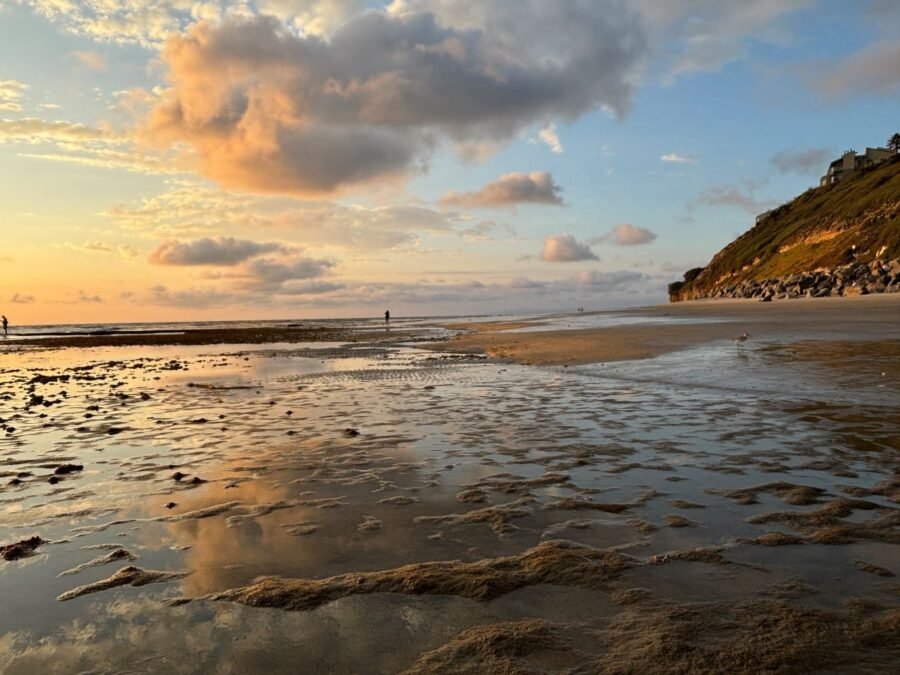
Encinitas is a beach town in north county San Diego that is known for its numerous quaint beaches below the bluffs. It begins at Cardiff Beach or Seaside Reef at the end of Solana Beach and Table Tops, and it ends where Grandview Beach meets South Pontos in Carlsbad. In this article, I’ll be over-viewing everything you need to know about surf fishing in Encinitas and all the individual beaches that make up “Encinitas Beach”. We’ll talk tides, common species, access points, parking and much more.
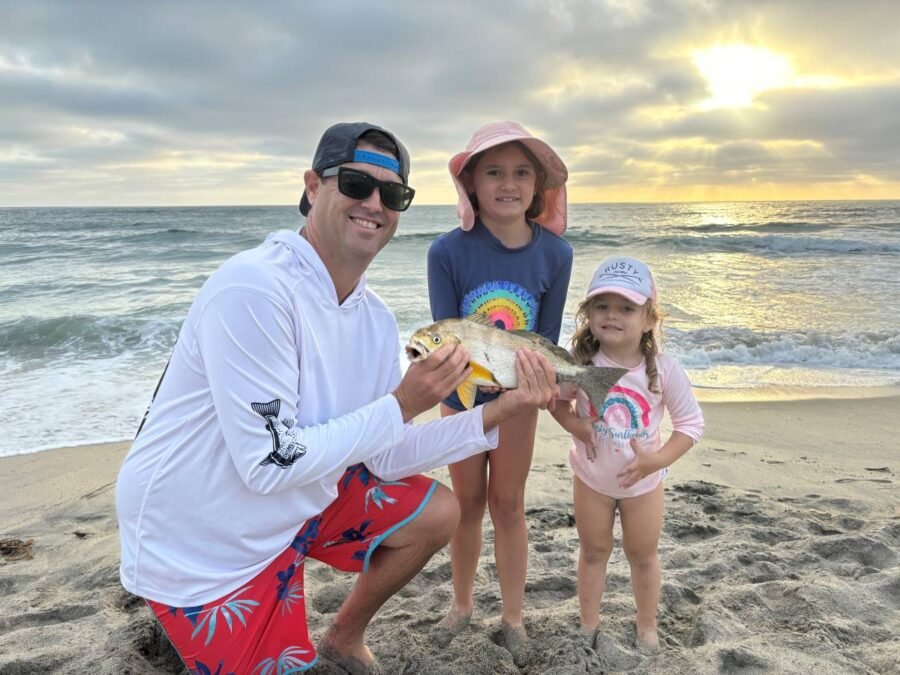
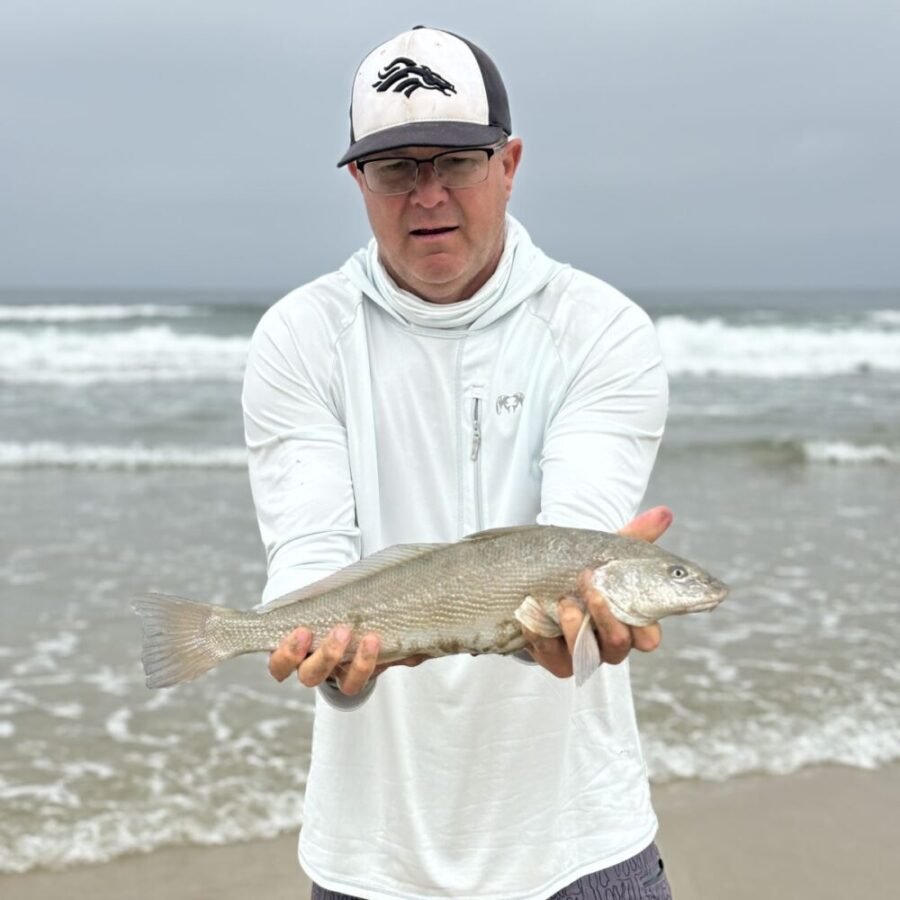
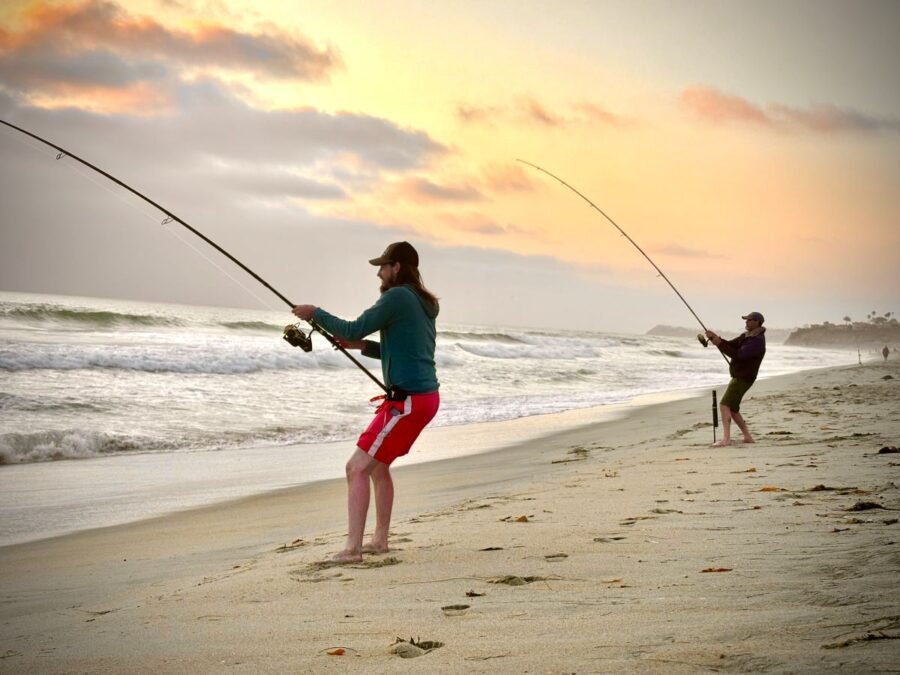
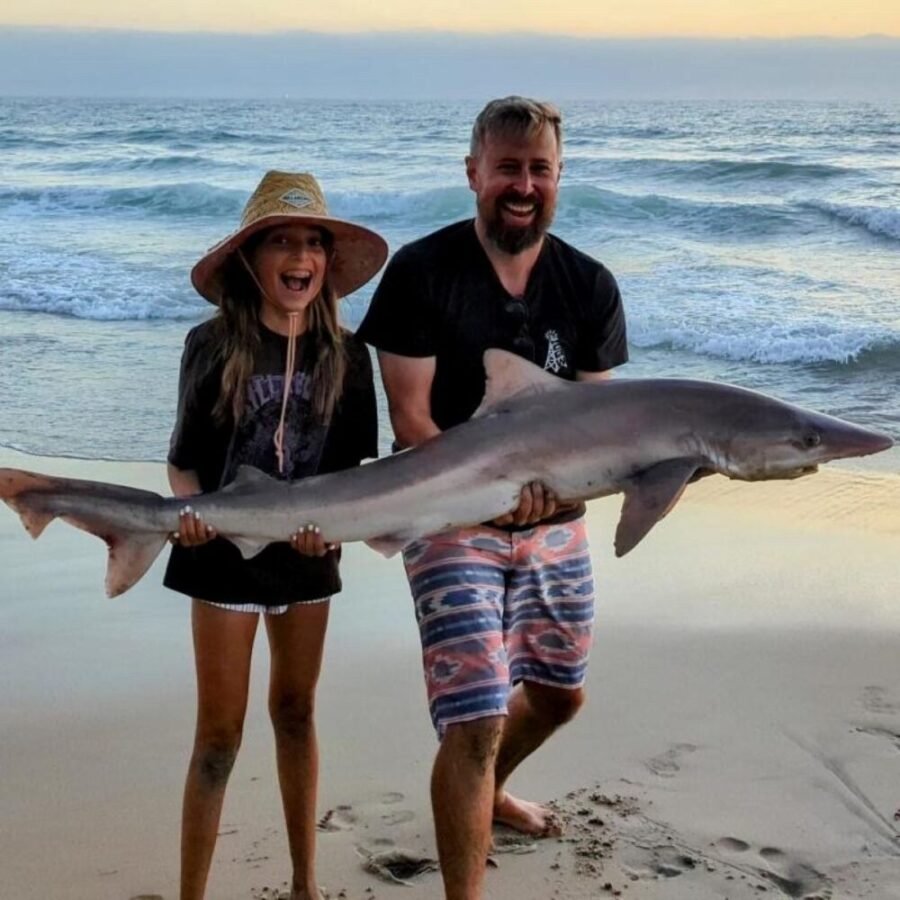
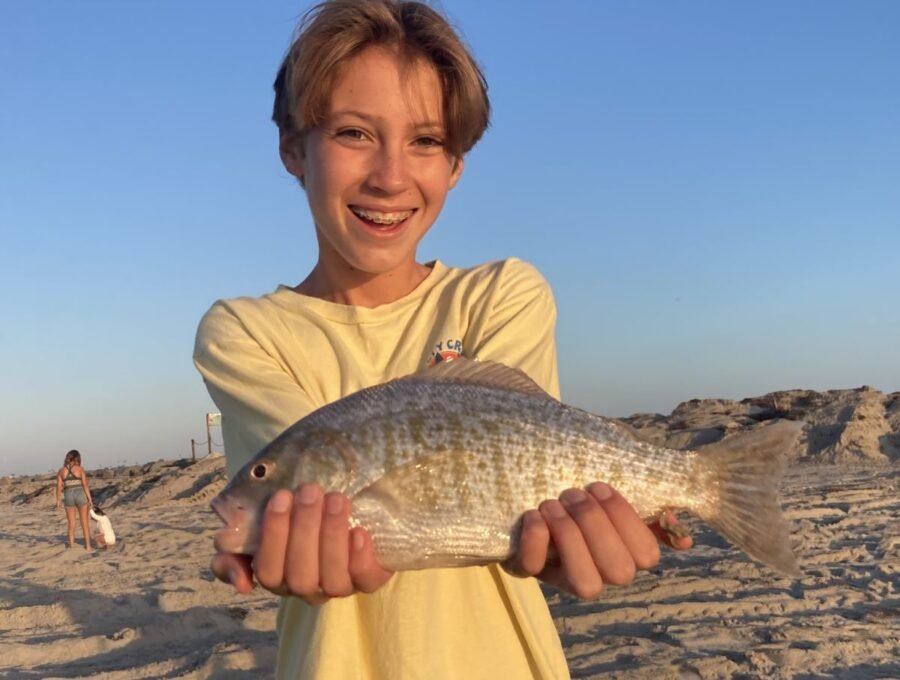
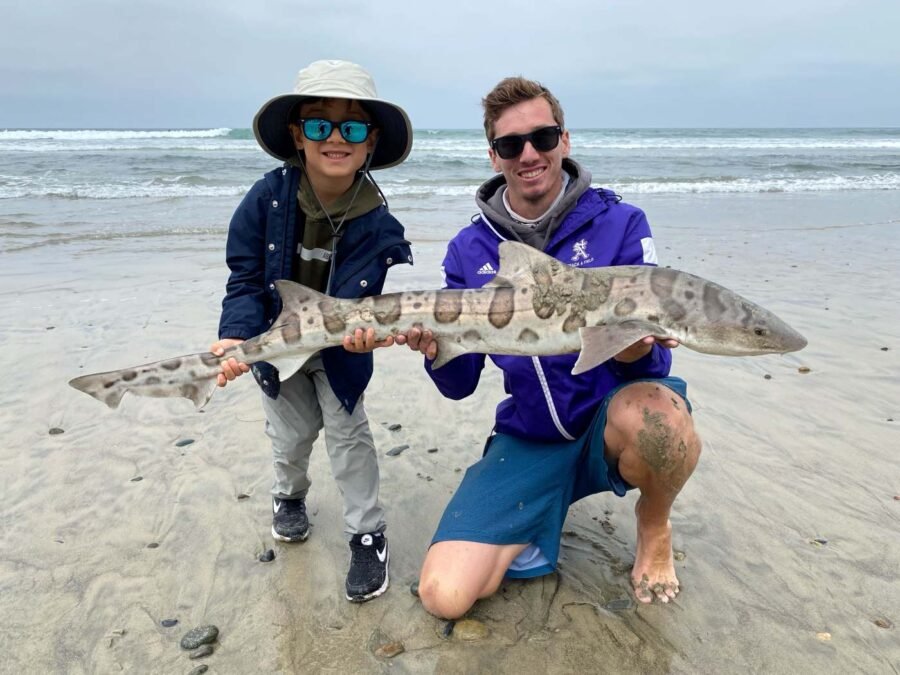
Overview of Surf Fishing at Encinitas Beaches
| Parking Info | See Individual Beach Sections |
| Ease of Access | Usually Steep Staircases Down To Sand |
| Tides | Below a 4-5-foot High Tide |
| Crowds | Less Crowded Than Most |
| Terrain Type | Intermixed Sand/Reef/Pebbles |
| No Fishing Areas | Swami’s – Read Below |
| Recommended Gear and Tackle | Surf Fishing Gear and Tackle |
As mentioned in my article on surf fishing Solana beach, north county beaches tend to be smaller, more specific stretches of sand that have been given names. So you typically don’t hear them referred to as “Solana Beach” or “Encinitas Beach”..
The beaches that make up Encinitas include (south to north) Seaside Reef, Cardiff State Beach, Cardiff Reef, San Elijo State Beach, Pipes Beach, Swamis Beach, D Street Beach, Moonlight State Beach, Stonesteps Beach, Leucadia State Beach (Beacons), and Grandview Beach.
I know that’s a lot of beaches, but don’t worry. I’ll make sure you’ve got all the info you need for surf fishing Encinitas and all the little beaches that make it such.
Parking and Access for Encinitas Beaches
| Beach | Parking | Access |
| Seaside Reef, Cardiff State Beach | South lot here and street parking. | Easy Access |
| Cardiff Reef | North lot here and street parking. | Easy Access |
| San Elijo State Beach, Pipes Beach | Pak on the PCH above the bluffs in front of the campgrounds. | Stairway |
| Swamis Beach | There is a lot located here. Additionally, there’s a good amount of parking on the PCH. | Stairway |
| D Street Beach, Moonlight Beach | Street parking near here. | Easy Access |
| Stonesteps Beach | Street parking near here. | Stairway |
| Leucadia State Beach, Beacons | Lot and street parking here. | Short Pathway |
| Grandview Beach | Lot here. | Stairway |
Surf Fishing Encinitas: YouTube Video
What Fish Can You Catch Surf Fishing in Encinitas
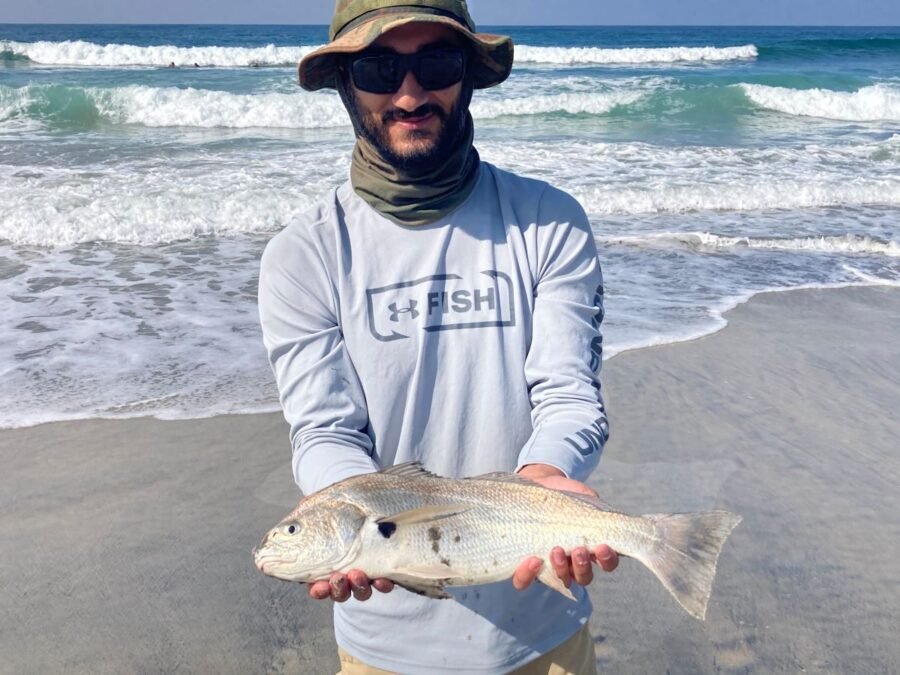
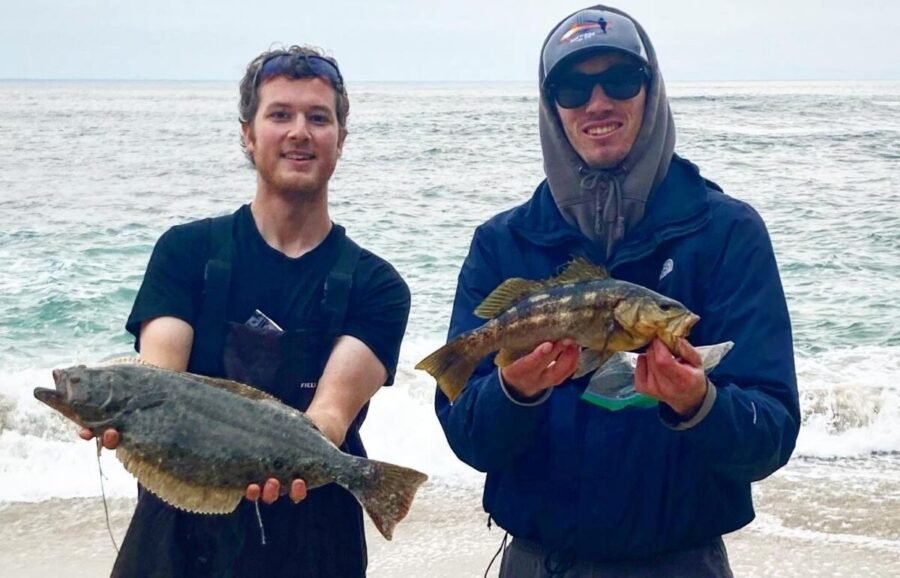
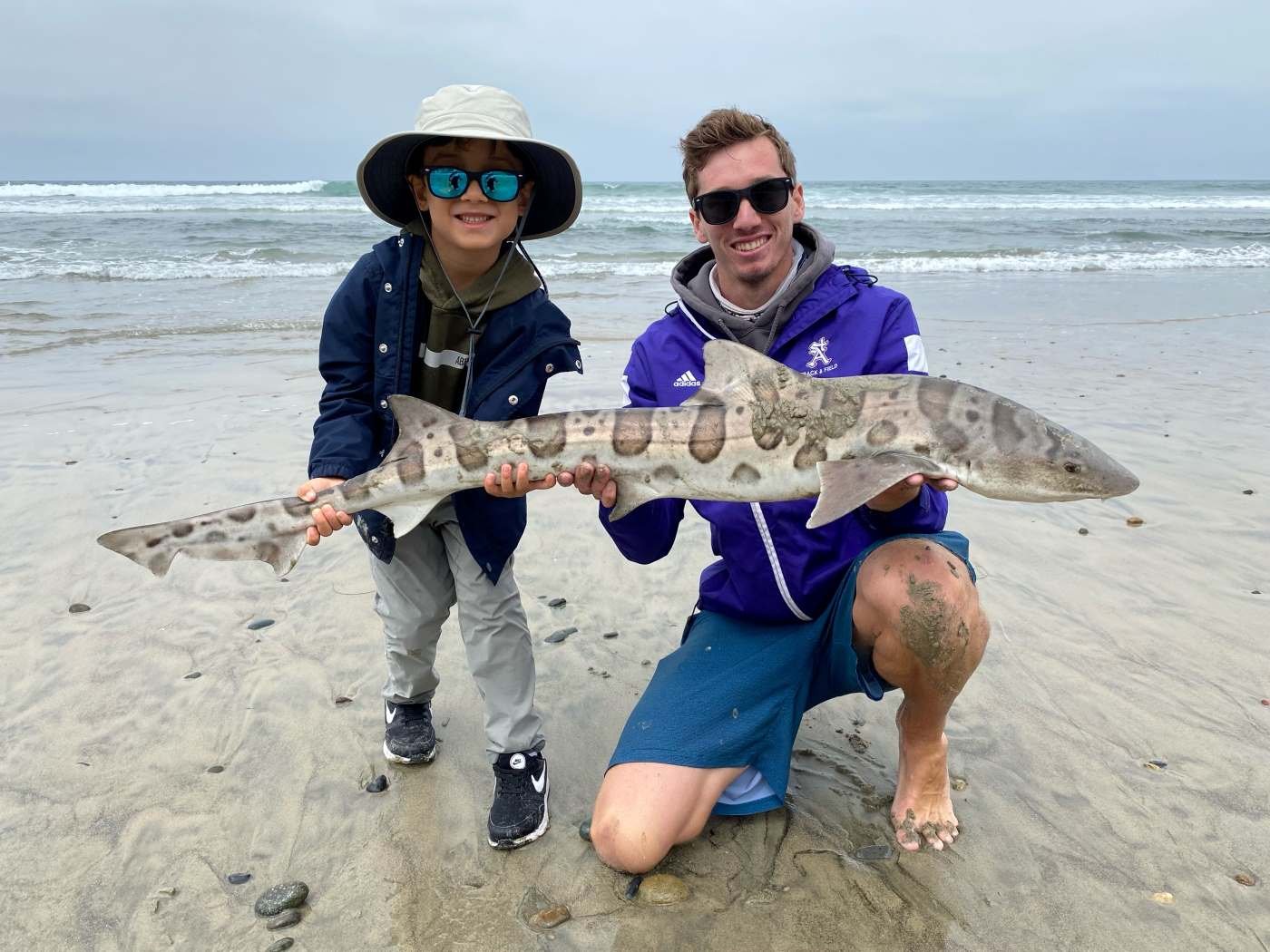
When surf fishing in Encinitas, you can target anything from corbina, croaker and surfperch on the light tackle style, halibut and bass on the swimbaits and jerkbaits, sharks and rays on the shark setup, and even sheephead and bass on shrimp or similar bait.
Since all of Encinitas is intermittent reef and sand, you’ll have to rely on knowledge of species and which habitats each prefers. For instance, the sandier the beach, you should target corbina, surfperch, croaker etc. along with sharks. The more reef there is, you can throw swimbaits for halibut and bass etc. See below for the common species you’ll catch in So Cal and click on them to learn more about catching them.
| Common Species | Peak Season | General Season |
| California Corbina | Jun-Aug | May-Oct |
| Spotfin Croaker | Jun-Aug | May-Oct |
| Yellowfin Croaker | May-Aug | May-Oct |
| Barred Surfperch | Nov-Apr | Year-Round |
| Walleye Surfperch | Nov-Apr | Year-Round |
| Shovelnose Guitarfish | Jun-Aug | May-Oct |
| Sting Ray (Round Ray) | Jun-Aug | Year-Round |
| Bat Ray | Jun-Aug | Year-Round |
| Leopard Shark | May-Aug | Apr-Oct |
| California Halibut | Jan-May | Year-Round |
| Soupfin Shark | Mar-Jul | Year-Round |
Bait and Gear & Tackle
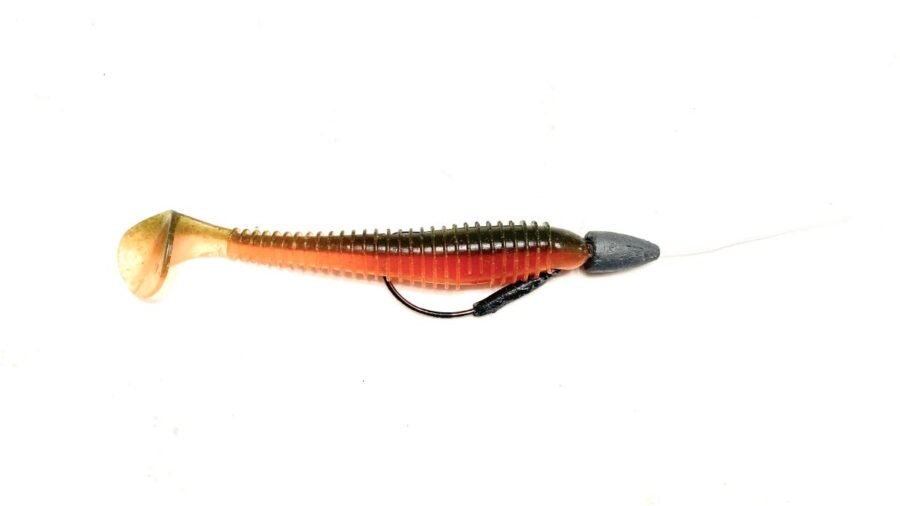

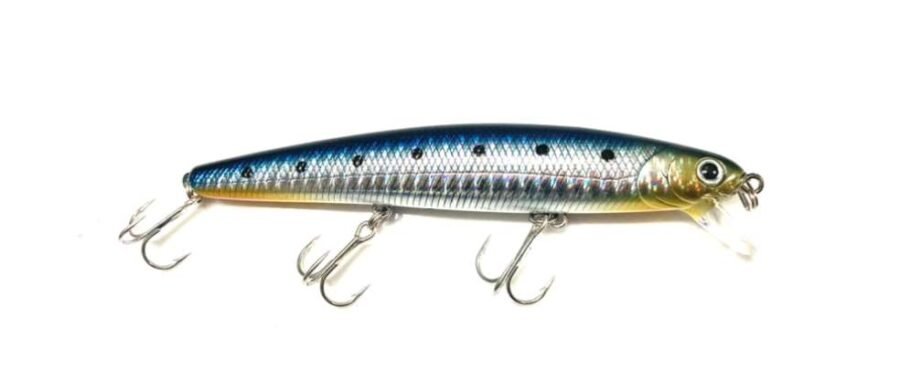
From May through August, sand crabs should be your number one choice of bait for all the light tackle species (corbina, croaker etc.) at the sandy stretched of Encinitas, If sand crabs aren’t available (usually from October-April), opt for clams or mussel meat. See the drop-down below for my exact gear and tackle for light tackle surf fishing.
For lures, both jerkbaits and swimbaits work well. As mentioned in similar articles, the denser the reef and structure, the more likely I am to choose swimbaits over jerkbaits.
Sharking here for me just depends on the time of year, time of day, tides and crowds. The south portion at Cardiff has more sand which allows for fishing at higher tides and less snags. Some of the north sections can be really good, however. You just have to go through some trial and error regarding snags. See below for my sharking gear and bait recommendations.
Light Tackle Gear
- Rod: Okuma Celilo (8’6″ MA) or the Okuma SST (8’6″ MA)
- Reel: Penn Battle II or III 4000 series
- Mainline: 15-pound monofilament
- For Bait: Carolina Rig:
- Leader Line: 15-pound fluorocarbon
- Swivels: 15-19mm barrel swivels
- Hooks: size #2 or #4 owner mosquito hooks
- Weights: 1-oz egg weight
- Beads: 8mm fishing beads
Swim Bait Gear
- Rod: Okuma SST-S-902HA – 1/2-2oz | 10-30lb | 9ft | H | MF
- Reel: Penn Spinfisher VI (3500 or 4500)
- Main Line: 30-pound braid
- Leader Line: 30-pound mono
- Lure Options:
Jerk Bait Gear
- Rod: Okuma SST (8’6″ MHA)
- Reel: Penn Battle II or III 4000 series
- Main Line:
- Leader Line: 15-pound fluorocarbon
- Lures: Lucky Craft FM 110 and Shimano WM 115 SP
Shark Gear
- Rod: Fiblink Moonsniper (12 or 13 feet)
- Reel: Penn Battle 8000 (II or III)
- Main Line: 50-pound braid
- Topshot: 100-pound nylon coated mono
- Leaders: Shark Leaders
- Weights: 8-ounce pyramid or 6-ounce sputnik
Where to Legally Fish in Encinitas
The following MPA’s should be noted – San Elijo Lagoon SMCA (No-Take) and Swami’s SMCA and Swami’s SMCA (image).
Swamis’s SMCA begins near the San Elijo Lagoon inlet and ends near Moonlight State Beach. For exact coordinates, refer to this link (image). To my knowledge, you can fish the surf at Swami’s Beach and you can even keep your catch so long as it’s of legal size and limits. It has to be recreational and by hook and line, but you CANNOT use sand crabs as they are among the “prohibited take”.
Seems kind of weird to me that they’d be concerned about sand crabs as they’re literally everywhere but they’re within the crustaceans and invertebrates category so we cannot use sand crabs at Swami’s State Beach. Do your research before you fish this area as you do NOT want to get fined for illegal take of any sort. But, Spotfin, corbina, and other species are good here.
Tides For Fishing Encinitas Beaches
Any tide is good for corbina, surfperch, and croaker as well as for sharking. For lures, you typically want a low enough tide to expose some structure. The chart below shows the max tides at which you can fish these beaches due to water levels reaching the bluffs. If you’re looking to learn more about how tides affect surf fishing, refer to the two articles below.
| Beach | Max Tide Height To Fish |
| Seaside Reef, Cardiff State Beach | 5 ft |
| Cardiff Reef | 5 ft |
| San Elijo State Beach, Pipes Beach | 2.5 ft |
| Swamis Beach | 3.5 ft |
| D Street Beach, Moonlight Beach | 4 ft |
| Stonesteps Beach | 3.5 |
| Leucadia State Beach, Beacons | 3.5 |
| Grandview Beach | 3.5 |
Type of Beach Structure in Encinitas
All of Encinitas is intermittent reef with sand. Cardiff has the most sand while the inlet at Cardiff reef, San Elijo, Swamis, Beacons, and Grandview can all have lots of reef depending on the time of year. Sometimes sand covers all of them, other times, there’s a lot of reef exposed. For this, you’ll have to check it out on your own.
If you’ve read some of my past articles, you’d know that every winter, some seasonal sand loss occurs. How much and where depends on the storms and swell directions we had. Typically late winter and early spring provide the most amount of exposed reef in San Diego where summertime features most of that sand coming back and covering our shoreline reefs.
Looking for more guides on local beaches. follow the link in the image below! And if you’re interested in booking me as your guide, reach out to me here at my San Diego surf fishing guide page.
